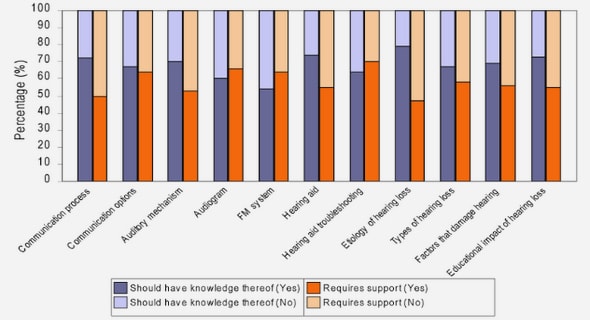(Downloads - 0)
For more info about our services contact : help@bestpfe.com
Table of contents
GENERAL INTRODUCTION
CHAPTER 1. AGRICULTURAL PRACTICES IN OIL PALM PLANTATIONS AND THEIR IMPACT ON HYDROLOGICAL CHANGES, NUTRIENT FLUXES AND WATER QUALITY IN INDONESIA: A REVIEW
1.1. Abstract
1.2. Introduction
1.3. Expansion of oil palm cultivation in Indonesia and environmental stakes
1.3.1. Expansion of oil palm cultivation
1.3.1.1. Palm oil utilization
1.3.1.2. Extent of oil palm cultivation in Indonesia: 1911 to present
1.3.1.3. Expected future expansion of oil palm cultivation
1.3.2. Environmental staked
1.3.2.1. Deforestation and loss of biodiversity
1.3.2.2. Peatland degradation
1.3.2.3. Greenhouse gas emissions and carbon storage
1.3.2.4. Water pollution
1.3.2.5. Agricultural policies
1.3.2.6. Implications for future research
1.4. Oil palm cultivation
1.4.1. Climate and soil conditions
1.4.2. Production systems: industrial versus smallholder plantations
1.4.3. Land clearing and site preparation
1.4.4. Water and soil management
1.4.5. Nutrient demand assessment
1.4.6. Fertilizer management
1.4.6.1. Chemical fertilizer
1.4.6.2. Organic fertilizer
1.4.7. Synthesis
1.5. Hydrological processes and associated nutrient transfers in oil palm plantations
1.5.1. Precipitation in Indonesia
1.5.2. Interception
1.5.3. Evapotranspiration
1.5.4. Soil infiltration, leaching and ground water quality
1.5.4.1. Soil infiltration
1.5.4.2. Leaching and ground water quality
1.5.5. Surface runoff and erosion
1.5.6. Stream flow and stream water quality
1.5.6.1. Stream flow
1.5.6.2. Stream water quality
1.5.7. Synthesis
1.6. Conclusion
CONNECTING PARAGRAPH TO CHAPTER 2
CHAPTER 2. LANDSCAPE-SCALE ASSESSMENT SOIL RESPONSE TO LONG-TERM ORGANIC AND MINERAL FERTILIZER APPLICATIONS IN AN INDUSTRIAL OIL PALM PLANTATION IN INDONESIA
2.1. Abstract
2.2. Introduction
2.3. Materials and methods
2.3.1. Site description
2.3.1.1. Study area
2.3.1.2. Preliminary soil classification
2.3.1.3. Fertilizer management
2.3.2. Landscape-scale approach: description and assumptions
2.3.2.1. Attributing a soil class to each block
2.3.2.2. Calculation of the fertilizer application sequence value for each block
2.3.2.3. Construction of nested subsets within each soil
2.3.2.4. Soil fertility survey and soil analysis
2.3.2.5. Statistical analysis
2.4. Results
2.4.1. Overall soil fertility status
2.4.2. Effect of organic versus mineral fertilizer on soil fertility in uniform fertilizer application sequences
2.4.3 Effect of organic versus mineral fertilizer on soil fertility in mixed fertilizer Sequences
2.5 Discussion
2.5.1. Effect of organic fertilizer application on soil fertility parameters in Sandy-loam uplands and loamy lowlands
2.5.1.1. Soil pH
2.5.1.2. Organic C and total N
2.5.1.3. Cation exchange capacity and base saturation
2.6. Conclusion
CONNECTING PARAGRAPH TO CHAPTER 3
CHAPTER 3. MULTI-SITE ASSESSMENT OF WATER QUALITY IN OIL PALM AGROECOSYSTEMS AND INFLUENCE OF SOIL TYPES AND FERTILIZER MANAGEMENT ON NUTRIENT FLUXES TO STREAMS
3.1. Abstract
3.2. Introduction
3.3. Material and Methods
3.3.1. Description of the study area and watershed delineation
3.3.2. Fertilizer management and nutrient inputs
3.3.3. Groundwater and watershed monitoring
3.3.4. Water sample analysis
3.3.5. Estimation of water flow, nutrient concentrations and fluxes
3.3.5.1. Annual water yields from water budget
3.3.5.2. Water flow estimation
3.3.5.3. Annual nutrient fluxes in streams
3.3.6. Data analysis
3.4. Results
3.4.1 Hydrological behavior
3.4.2. Stream water quality and nutrient fluxes in the landscape
3.4.2.1. Water quality
3.4.2.2. Nutrient fluxes to streams
3.4.3. Influence of the soil and fertilizer management on water chemistry and nutrient transfers
3.4.3.1 Nutrient inputs
3.4.3.2. Influence at the local-scale: groundwater hydrochemistry
3.4.3.3. Influence at the watershed-scale: nutrient inputs and nutrient fluxes
3.5. Discussion
3.5.1. Streams mainly fed by shallow groundwater
3.5.2. Low concentrations and low fluxes exported in the landscape
3.5.2.1. Overall stream water quality in the landscape
3.5.2.2. Overall nutrient fluxes to streams in the landscape
3.5.3. Soil characteristics and fertilizer management influenced groundwater chemistry and nutrient fluxes
3.5.4. Agronomic and environmental implications
3.6. Conclusion
GENERAL CONCLUSIONS
FUTURE RESEARCH DIRECTIONS
REFERENCES



